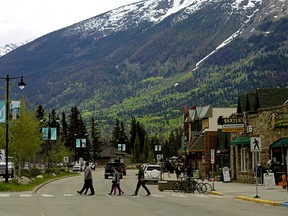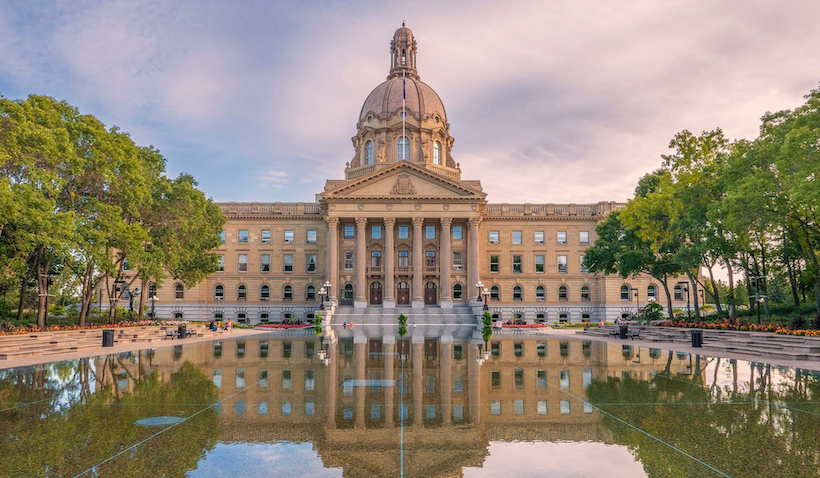With apologies to other Alberta communities that have been torched or threatened by wildfire in the last 15 years — including several close calls just last year — there is something particularly devastating to the heart in seeing the town of Jasper go up in flames.
Now many of us will have to recalibrate again, even though Jasper probably was the most vulnerable of all to this particular natural disaster. Part of what makes it beautiful is also what has always threatened it.
To most Albertans, and anyone else who has visited the area, Jasper is more than a place.
It’s a feeling. An idea. A sanctuary. A state of mind.
It is our crown jewel of the Rockies, our picture postcard to the world — the less touristy one that has somehow maintained much of its natural, rustic soul.
People can vividly tell you about the first time they saw Jasper National Park, that sucking in of breath fuelled by awe, and the exhale of contentment that the world must be OK if it creates places like this.
I have been fortunate enough to make several trips to Jasper in my adult life, staying variously at motels, cabins, and campgrounds — some of which are now undoubtedly destroyed.
(Happily, reports suggest much of the iconic Jasper Park Lodge, though damaged, has been spared incineration).
I’ve skied, cycled and hiked through its forests. I’ve ascended Whistlers Mountain on the SkyTram, walked along waterfalls, picnicked aside turquoise lakes, and marvelled at the proximity of wildlife. Visual reminders of those experiences hang on my walls.

As we know, there are different stages to grief.
Right now, it’s clear many Albertans are in the stage of anger, looking to blame someone for the destruction of something so precious. An easy target is the UCP government for cutting wildfire management funding in recent years, and for failing to sufficiently address climate change.
On the latter charge, perspective is in order. Alberta is a small cog in the climate factory, which has been intensifying for decades. Which means the provincial government could have shut down the entire oilsands five years ago and it would have likely made no difference to the events of this week.
At the same time, this must be our loudest and final wake-up call for taking more aggressive action. I’m skeptical, because we’ve pressed the snooze button on the alarms we’ve received in past, but perhaps the sight of our beloved Jasper in flames will finally shock us out of lethargy.
As a province, we have repeatedly deluded ourselves — despite plenty of smoking evidence — into the fallacy that conditions could never get bad enough, or that we just wouldn’t get unlucky enough, to see major towns and cities on fire. Or that it couldn’t happen twice, or three times or more.
Whatever is left of that self-deception has to go.
Yes, Alberta has always had wildfires and always will. They happen for different reasons, many of them naturally occurring, and many caused by humans, including some that can be linked to recklessness or arson.
However, what is indisputable is that a warming climate tends to increase the frequency and severity of those fires, which increases the chances that population centres will be hit.
As such, our actions must look to better protect us from the climate-change effects that are already locked in, while also doing our part to prevent the emissions that will lead to even worse effects in the future.
In that vein, the province’s decision to cut wildfire management resources needs to be investigated to determine what impact, if any, that had on how the Jasper wildfire was tackled.
(The province did finally increase the budget for wildfire management this year, but it’s unclear how much of that has yet hit the ground).
The federal government’s policies, through Parks Canada, must also be examined.
Have forest management practices been appropriate, or have they over-prioritized conservation against the protection of people and infrastructure?
Are the early detection and warning systems adequate? Did government authorities react as promptly as they should have to the danger? Was there cause to bring in additional firefighting resources more quickly, or was this just an inevitable outcome of nature’s unmerciful winds?

Answers to those questions will hopefully come in time.
Right now, our thoughts and efforts need to be for the people whose lives and livelihoods are in Jasper. They are going to need our help for a while, just as we’ve done with many displaced Albertans and other Canadians in the past. Even though we wish it didn’t have to be the case, our province is well honed at this.
Thankfully, there are no reports yet of deaths or serious injuries from this wildfire, including among the many courageous firefighters who will have lifelong nightmares of witnessing the destruction first-hand.
(Unfortunately, their job is long from over, not just in Jasper but at the sites of many other dangerous wildfires up and down the province.)
We can be thankful also that rain, though perhaps several hours or days too late, finally arrived in the area to help prevent further destruction.
Though fires are still burning, much of the town and its critical infrastructure remain intact, we’re told, which gives Jasper a backbone to build on.
As for the sections that have been wiped out, there will be decisions to come on what has been lost forever, and what can be rebuilt or made even stronger.
But make no mistake, as hard as this is, I have to believe Jasper will re-emerge. It will again be our crown jewel, perhaps changed, perhaps scarred, but treasured more than ever.
I believe this because Jasper is more than a place. It is an idea, and ideas are incombustible.



